Here's a showcase of some lowpass filters.
You'll want to read up on "causal" filters vs non-causal filters, as well as the difference between FIR and IIR.
Loading the data:
signal = scipy.datasets.electrocardiogram()
fs = 360 # say the docs
time = np.arange(signal.size) / fs # for plotting only
Explore the signal:
fig, axs = plt.subplots(3, 1, figsize=(15, 15))
axs[0].plot(time[30000:31000], signal[30000:31000])
axs[1].plot(time[30000:40000], signal[30000:40000])
axs[2].plot(time, signal)
axs[0].set_xlabel('Time (s)')
axs[1].set_xlabel('Time (s)')
axs[2].set_xlabel('Time (s)')
plt.show()

Trying a few filters:
# Butterworth, first order, 0.5 Hz cutoff
lowpass = scipy.signal.butter(1, 0.5, btype='lowpass', fs=fs, output='sos')
lowpassed = scipy.signal.sosfilt(lowpass, signal)
highpassed = signal - lowpassed
fig, axs = plt.subplots(2, 1, figsize=(15, 10))
axs[0].plot(time[30000:32000], signal[30000:32000])
axs[0].plot(time[30000:32000], lowpassed[30000:32000])
axs[1].plot(time[30000:32000], highpassed[30000:32000])
axs[0].set_xlabel('Time (s)')
axs[1].set_xlabel('Time (s)')
axs[0].set_ylim([-3, +3])
axs[1].set_ylim([-3, +3])
plt.show()

# take note of these coefficients:
>>> scipy.signal.butter(1, 0.5, btype='lowpass', fs=fs, output='ba')
(array([0.00434, 0.00434]), array([ 1. , -0.99131]))
# and compare to the following...
# Almost the same thing, different formulation: "exponential average"
# y += (x - y) * alpha # applied to each value X of the signal to produce a new Y
alpha = 1/100 # depends on fs and desired cutoff frequency
lowpassed = scipy.signal.lfilter([alpha], [1, -(1-alpha)], signal)
highpassed = signal - lowpassed
fig, axs = plt.subplots(2, 1, figsize=(15, 10))
axs[0].plot(time[30000:32000], signal[30000:32000])
axs[0].plot(time[30000:32000], lowpassed[30000:32000])
axs[1].plot(time[30000:32000], highpassed[30000:32000])
axs[0].set_xlabel('Time (s)')
axs[1].set_xlabel('Time (s)')
axs[0].set_ylim([-3, +3])
axs[1].set_ylim([-3, +3])
plt.show()

# the first two filters were "causal", i.e. only using past samples.
# downside: lag, phase shift, i.e. the lowpass doesn't quite match/track the signal.
# "non-causal" filters can use future samples.
# this allows to remove the phase shift but the processing introduces a delay instead.
# this delay is irrelevant for offline processing or if it's considered "small enough".
# the following are non-causal.
# median filter. interpret peaks as outliers, so this reveals whatever can be considered "baseline".
# can be causal if the kernel window only covers the past but that introduces lag (noticeable when the signal drifts actively).
# might need another pass of smoothing, on the median filter, before subtracting.
# median filtering CAN be cheap, if using the right data structure. scipy implementation seems less smart, takes noticeable time.
lowpassed = scipy.signal.medfilt(signal, kernel_size=fs+1)
highpassed = signal - lowpassed
fig, axs = plt.subplots(2, 1, figsize=(15, 10))
axs[0].plot(time[30000:32000], signal[30000:32000])
axs[0].plot(time[30000:32000], lowpassed[30000:32000])
axs[1].plot(time[30000:32000], highpassed[30000:32000])
axs[0].set_xlabel('Time (s)')
axs[1].set_xlabel('Time (s)')
axs[0].set_ylim([-3, +3])
axs[1].set_ylim([-3, +3])
plt.show()

lowpassed = scipy.ndimage.gaussian_filter1d(signal, sigma=0.2 * fs, order=0)
highpassed = signal - lowpassed
fig, axs = plt.subplots(2, 1, figsize=(15, 10))
axs[0].plot(time[30000:32000], signal[30000:32000])
axs[0].plot(time[30000:32000], lowpassed[30000:32000])
axs[1].plot(time[30000:32000], highpassed[30000:32000])
axs[0].set_xlabel('Time (s)')
axs[1].set_xlabel('Time (s)')
axs[0].set_ylim([-3, +3])
axs[1].set_ylim([-3, +3])
plt.show()









